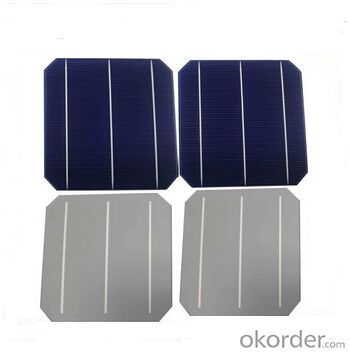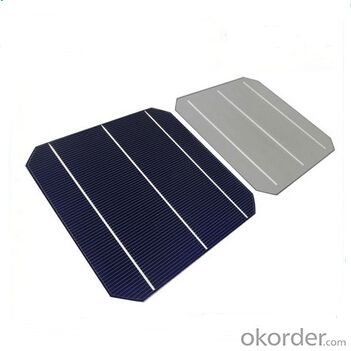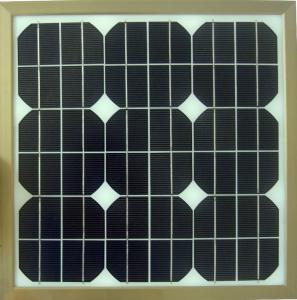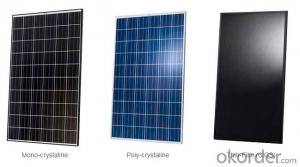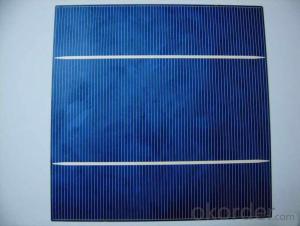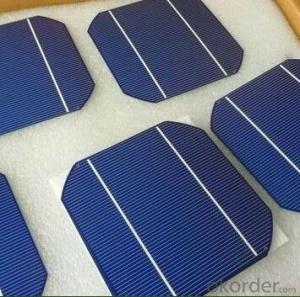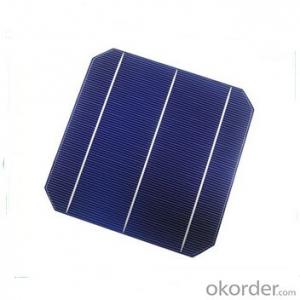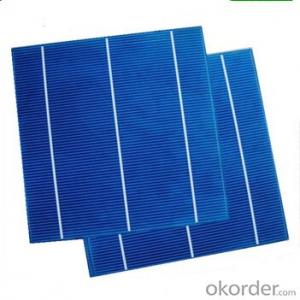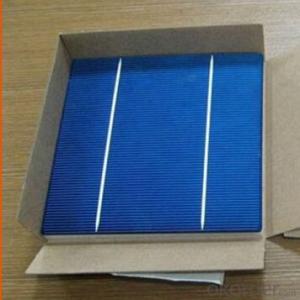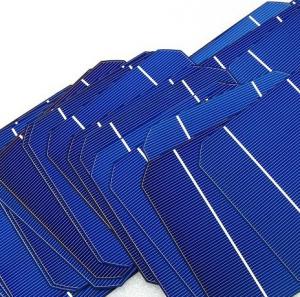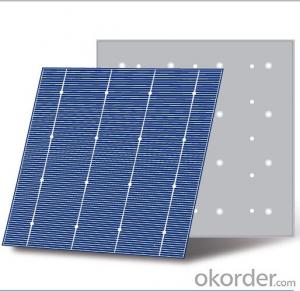Ultra Thin Monocrystalline Solar Cells High Quality 16.00%-18.20%
- Loading Port:
- Shanghai
- Payment Terms:
- TT OR LC
- Min Order Qty:
- 1000 pc
- Supply Capability:
- 1000000 pc/month
OKorder Service Pledge
OKorder Financial Service
You Might Also Like
Solar Cells:
Solar cells is made by solar wafer, it has three categories of solar cell right now, monocrystalline polycrystalline and thin film,These cells are entirely based around the concept PN junction, which is the critical part of solar module, it is the part that can convert the light energy into electricity, the thickness is from 180um to 200um, with even busbars to conduct electricity, textured cell can decrease diffuse reflection; they are often electrically connected and encapsulated as a module. Photovoltaic modules often have a sheet of glass on the front (sun up) side, allowing light to pass while protecting semiconductor wafers from abrasion and impact due to wind-driven debris, rain, hail, etc. Solar cells are also usually connected in series in modules, creating an additive voltage. Connecting cells in parallel will yield a higher current;With high quality and stable quality. Our Cells can greatly improve the performance of Solar Modules.
Features:
1. High conversion efficiencies resulting in superior power output performance.
2. Outstanding power output even in low light or high temperature conditions
3. Optimized design for ease of soldering and lamination
4. Long-term stability, reliability and performance
5. Low breakage rate
6. Color uniformity
Solar Cells Advantage:
• High efficiency and stable performance in photovoltaic conversion.
• Advanced diffusion technique ensuring the homogeneity of energy conversion efficiency of the cell.
• Advanced PECVD film forming, providing a dark blue silicon nitride anti-reflection film of homogenous color and attractive appearance.
• High quality metal paste for back surface and electrode, ensuring good conductivity, high pulling strength and ease of soldering.
• High precision patterning using screen printing, ensuring accurate busbar location for ease with automatic soldering a laser cutting.
Specifications:
Product model | Eff. % | Pmax (W) | Vpm(V) | Ipm (A) | Voc(V) | Isc(A) | ||||
18.20%-4.429W | EFF≥18.20% | Pmax ≥4.429 | 0.535±3 | 8.2785 | 0.636 | 8.815 | ||||
18.00%-4.380W | 18.20%>EFF≥18.00% | 4.429>Pmax ≥4.380 | 0.534±3 | 8.2022 | 0.635 | 8.753 | ||||
17.80%-4.332W | 18.00%>EFF≥17.80% | 4.380>Pmax ≥4.332 | 0.533±3 | 8.1088 | 0.634 | 8.704 | ||||
17.60%-4.283W | 17.80%>EFF≥17.60% | 4.332>Pmax ≥4.283 | 0.531±3 | 8.0662 | 0.633 | 8.620 | ||||
17.40%-4.234W | 17.60%>EFF≥17.40% | 4.283>Pmax ≥4.234 | 0.530±3 | 7.9896 | 0.632 | 8.610 | ||||
17.20%-4.186W | 17.40%>EFF≥17.20% | 4.234>Pmax ≥4.186 | 0.529±3 | 7.9127 | 0.631 | 8.529 | ||||
17.00%-4.137W | 17.20%>EFF≥17.00% | 4.186>Pmax ≥4.137 | 0.527±3 | 7.8503 | 0.630 | 8.459 | ||||
16.80%-4.088W | 17.00%>EFF≥16.80% | 4.137>Pmax ≥4.088 | 0.524±3 | 7.8024 | 0.629 | 8.397 | ||||
16.60%-4.040W | 16.80%>EFF≥16.60% | 4.088>Pmax ≥4.040 | 0.521±3 | 7.7539 | 0.627 | 8.239 | ||||
16.40%-3.991W | 16.60%>EFF≥16.40% | 4.040>Pmax ≥3.991 | 0.519±3 | 7.6900 | 0.625 | 8.198 | ||||
16.20%-3.942W | 16.40%>EFF≥16.20% | 3.991>Pmax ≥3.942 | 0.516±3 | 7.6404 | 0.623 | 8.153 | ||||
16.00%-3.894W | 16.20%>EFF≥16.00% | 3.942>Pmax ≥3.894 | 0.514±3 | 7.5754 | 0.620 | 8.145 | ||||
Packaging & Delivery of Solar Cells
Carton Box Package and Deliver by air. It should be noticed that it should be avoid of water, sunshine and moist.
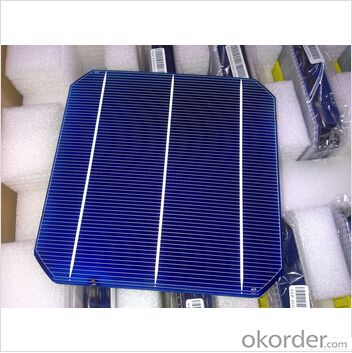
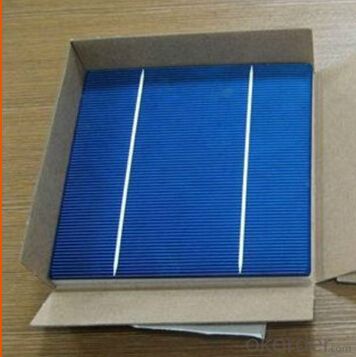
FAQ
We have organized several common questions for our clients,may help you sincerely:
①What price for each watt?
It depends on the efficiency of the solar cell, quantity, delivery date and payment terms.
②How long can we receive the product after purchase?
In the purchase of product within three working days, We will arrange the factory delivery as soon as possible. The pecific time of receiving is related to the state and position of customers.Commonly 7 to 10 working days can be served.
③Can you provide the peripheral products of the solar panels, such as the battery, controller, and inverter? If so, can you tell me how do they match each other?
Yes, we can, we have two companies for solar region, one is CNBM International, the other is CNBM engineering Co.
We can provide you not only the solar module but also the off grid solar system, we can also provide you service with on grid plant.
④What is your warranty of solar cell?
Our product can promise lower than 0.3% open box crack, we support claim after opening the box if it has crackm color difference or sth, the buyer should give pictures immediately, we can not accept the claim after the solar cell has assembled to solar panel.
• Timeliness of delivery
• ⑤How do you pack your products?
We have rich experience on how to pack the solar cell to make sure the safety on shipment, we could use wooden box or pallet as buyer's preference.
- Q: What is the difference between a monocrystalline and polycrystalline solar cell?
- The main difference between a monocrystalline and polycrystalline solar cell lies in the structure of the silicon material used. Monocrystalline solar cells are made from a single crystal structure, resulting in a uniform and consistent appearance with a high level of efficiency. On the other hand, polycrystalline solar cells are made from multiple crystal structures, giving them a fragmented and non-uniform appearance with a slightly lower efficiency. Overall, monocrystalline cells tend to be more expensive but offer higher efficiency, while polycrystalline cells are more affordable but slightly less efficient.
- Q: Can solar cells be used to power communication systems?
- Yes, solar cells can be used to power communication systems. Solar cells convert sunlight into electricity, which can be used to power various devices, including communication systems. This is especially useful in remote areas or during emergencies where access to traditional power sources may be limited. Additionally, solar-powered communication systems are environmentally friendly and sustainable.
- Q: What is the payback period for installing solar cells?
- The payback period for installing solar cells varies depending on several factors such as the initial cost of the installation, the amount of energy generated, and the cost of electricity. On average, it typically takes between 5 to 10 years for solar cells to recoup their initial investment through energy savings.
- Q: Can solar cells be used for powering mining operations?
- Yes, solar cells can be used for powering mining operations. Solar energy can be harnessed through photovoltaic cells, which convert sunlight into electricity. By installing solar panels, mining operations can reduce their dependence on fossil fuels and lower their carbon footprint. Solar power can be used to run equipment, lighting, and other electrical systems required for mining operations. Additionally, solar energy can be stored in batteries for use during non-sunlight hours, ensuring a continuous power supply.
- Q: How do solar cells impact carbon emissions?
- Solar cells have a significant positive impact on carbon emissions as they generate electricity without producing any greenhouse gas emissions. By harnessing the sun's energy, solar cells reduce our reliance on fossil fuels for power generation, ultimately helping to mitigate climate change and reduce carbon emissions.
- Q: Can solar cells be used in water pumps?
- Yes, solar cells can be used in water pumps. Solar-powered water pumps utilize solar panels to convert sunlight into electricity, which can power the pump. This enables the pumps to operate independently of grid electricity, making them ideal for remote areas or locations with limited access to electricity. Solar-powered water pumps are cost-effective, environmentally friendly, and can be used for various applications such as agriculture, irrigation, or supply of clean drinking water.
- Q: Can solar cells be used for powering remote surveillance cameras?
- Yes, solar cells can be used for powering remote surveillance cameras. Solar cells capture sunlight and convert it into electricity, which can then be used to power various devices, including surveillance cameras. This makes solar-powered surveillance cameras a sustainable and cost-effective option for remote locations where access to electrical grids may be limited or non-existent.
- Q: Can solar cells be used in hot climates?
- Yes, solar cells can be used in hot climates. In fact, solar cells are more efficient in hot climates due to increased sunlight and higher temperatures, which can enhance their overall performance. However, it is important to consider proper maintenance and cooling mechanisms to prevent any potential damage or decrease in efficiency caused by excessive heat.
- Q: Can solar cells be used in concert venues?
- Yes, solar cells can be used in concert venues. They can be installed on the rooftops, facades, or parking areas of concert venues to generate clean and renewable electricity. Solar energy can power various aspects of the venue, such as lighting, sound systems, and other electrical equipment, reducing the reliance on traditional energy sources and lowering carbon emissions. Additionally, solar panels can be integrated into portable structures to provide power for outdoor concerts and festivals.
- Q: What is the impact of snow accumulation on solar cell performance?
- Snow accumulation can have a negative impact on solar cell performance as it reduces the amount of sunlight reaching the cells, thus decreasing their efficiency. Additionally, snow cover can block the flow of electricity from the cells to the grid, further affecting their overall performance. Regular cleaning and maintenance of solar panels are important to minimize the impact of snow accumulation.
Send your message to us
Ultra Thin Monocrystalline Solar Cells High Quality 16.00%-18.20%
- Loading Port:
- Shanghai
- Payment Terms:
- TT OR LC
- Min Order Qty:
- 1000 pc
- Supply Capability:
- 1000000 pc/month
OKorder Service Pledge
OKorder Financial Service
Similar products
Hot products
Hot Searches
Related keywords


